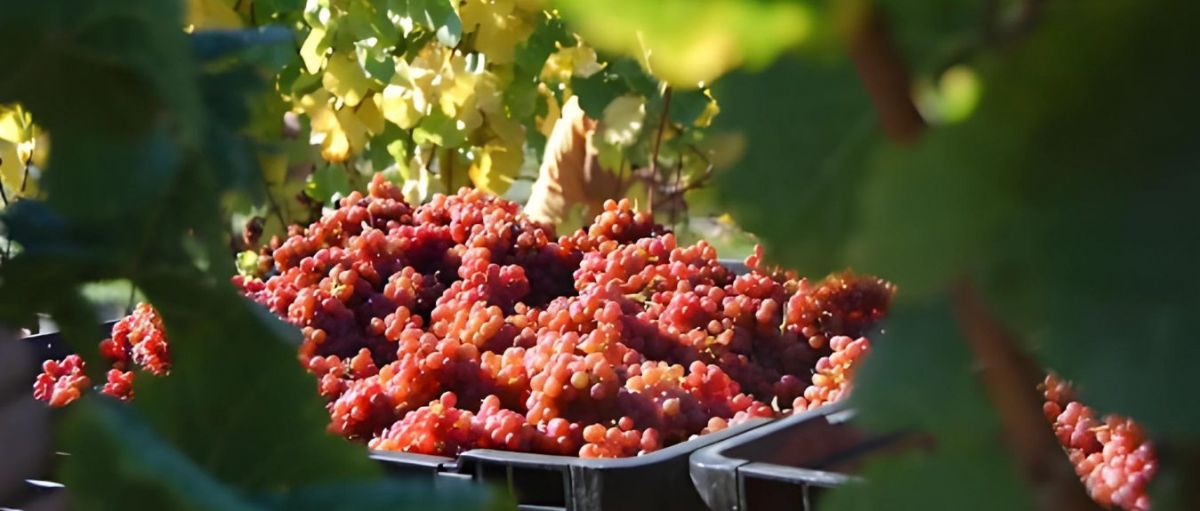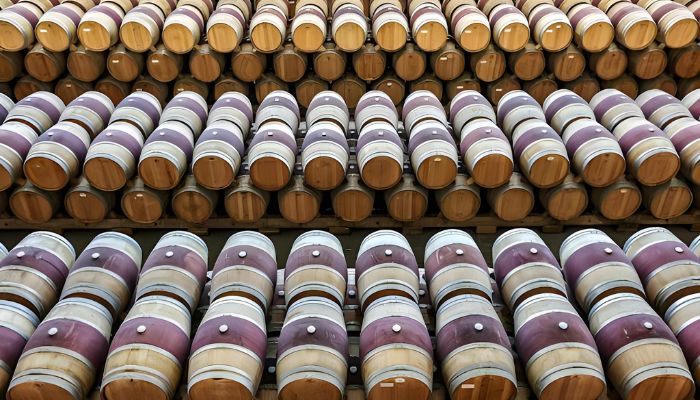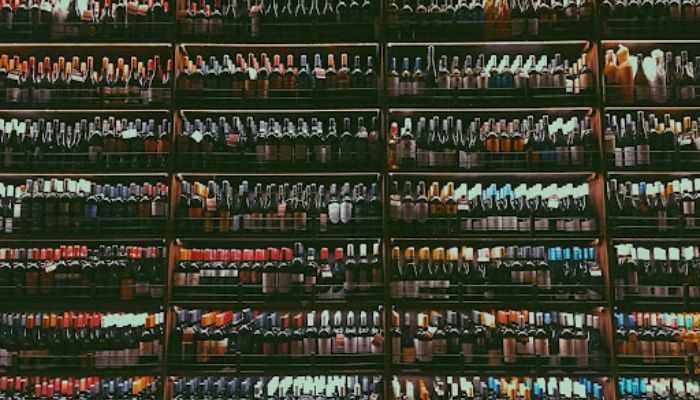Warehouse
Open from Jan 1st - July 10th 2026
Judging
Date
July 27, 2026
Winners
Announced
August 12, 2026

The Bordeaux 2023 en primeur wine futures releases have seen significant price cuts compared to previous vintages, with Mouton Rothschild 2023 and Angélus 2023 dropping by more than 30% and 25% respectively versus their 2022 releases. Other releases last month, such as Château Haut-Batailley 2023 and Château Cantemerle 2023, also saw notable decreases.
In California, the San Francisco Chronicle just published a major story entitled, “California Wine is in Serious Trouble.” The article highlighted the challenges faced by Megan Bell, owner of Margins Winery, reflecting the broader struggles of the state's wine industry. Bell experienced a significant downturn in sales in 2023, with only three out of 19 distributors agreeing to buy her wines. The entire California wine industry is facing an unprecedented decline, with wine consumption falling 8.7% in 2023, according to industry analysts.
So, what is the outlook for the wine industry globally and the US wine industry in particular?

Source: Unsplash
In Bordeaux, it’s a mixed bag. The en primeur price cuts were largely anticipated, as Bordeaux 2022 wines debuted at high prices and, as seen, the global fine wine market has been challenging. Despite this, there are some clear success stories, with Mouton Rothschild 2023 being a potential 100-point wine and released as one of the cheapest available vintages of the first growth. The availability of back-vintages may also be a consideration for buyers, with some wines offering compelling options compared to the 2023 releases. Overall, the Bordeaux 2023 en primeur campaign is off to a strong start, with good demand but not outsized, according to industry experts.
This year's Bordeaux en primeur also saw a notable absence of Chinese buyers, with fewer representatives attending compared to previous years. VinoJoy News reported that major importers, including Chengdu Fine West International Trade Co., Ltd, and Ningbo Yongyu, did not send representatives, citing the high release prices of Bordeaux en primeur wines in recent years, which have not aligned with significantly lower market prices. This discrepancy has made it unfeasible for Chinese importers to invest in futures, as many wines from the 2021 En Primeur campaign are now selling for less than their futures prices. Xie Jianjiang, General Manager of Ningbo Yongyu, highlighted the increasing risks of purchasing en primeurs and stated that the decision on whether to purchase this year's en primeurs will depend on the forthcoming prices. Wine Lister, a wine consultancy, recommended a 30% reduction in the 2023 vintage prices compared to 2022 to stimulate demand. Despite these challenges, China remains a crucial market for Bordeaux prestigious wines, with Bordeaux exporting 40.2 million liters to China in 2021, valued at 616 million euros.
In California, fine wine produced by many small producers may be a gloomier story than Bordeaux. Factors contributing to the California decline include changing consumer preferences among Millennials and Gen Zers, competition from other alcoholic beverages like hard seltzer and canned cocktails, and a growing awareness of the health risks associated with alcohol consumption. The COVID-19 pandemic also had unforeseen effects, with a surge in wine sales followed by a drop as people realized they had stocked up excessively.
The pandemic also caused supply chain disruptions. Small vineyards, especially, have struggled with obtaining the necessary materials. For example, US winemakers rely on European glass manufacturers, and the cost of natural gas in Europe surged after the Russian invasion of Ukraine, leading to a 20% increase in glass prices in the US. Additionally, packaging materials such as labels, corks, and capsules have also become more expensive.
Winery owner Bell, like many other winery owners, had to adapt to survive. The Chronicle reported that she resorted to a crowdfunding campaign to keep her business afloat and plans to make half as much wine this year as last year. She also decided to only bottle products that are at least 70% pre-sold and aims to sell more through her tasting room to increase her profit margin.
Many industry analysts believe that the current situation is an inventory adjustment and that wine sales will eventually rebound. However, they do not expect a return to the rapid growth seen in previous decades. For Bell and other young winemakers, the end of the boom times may mean reevaluating their expectations and finding new ways to sustain their businesses in a changing market.

Source: Unsplash
One primary issue is distributor consolidation and distributors of both wines and spirits are in the spotlight. Southern Glazer’s Wine and Spirits is the largest alcohol distributor in the US and the 10th-largest private company in the country. Despite its low profile among consumers, Southern Glazer’s distributes many popular brands like Grey Goose, Bacardi, and Meiomi wines. The company is facing unprecedented scrutiny and legal challenges.
The Biden administration has raised concerns about Southern Glazer’s dominance in the market, leading to an investigation by the Federal Trade Commission (FTC) for possible violations of federal law. The Internal Revenue Service (IRS) and the Alcohol and Tobacco Tax and Trade Bureau have also conducted official activities at the company’s offices.
The company also faces a tell-tale antitrust lawsuit filed by Provi, an online platform connecting alcohol suppliers, distributors, and retailers. Provi alleges that Southern Glazer’s and its competitor, Republic National Distributing Co., boycotted Provi and forced customers to use their proprietary platforms instead. This boycott significantly impacted Provi’s business, according to the lawsuit. The Provi lawsuit presents a formidable challenge due to Provi's resources and legal representation.
Additionally, the FTC is investigating Southern Glazer’s for potentially violating the Robinson-Patman Act, which prohibits discriminatory pricing. This investigation is part of the Biden administration’s larger effort to increase competition in various industries, including the alcohol industry.
Greater competition should lead to lower prices. Indeed, the BBC reported that escalating prices of domestic wines is particularly affecting American consumers. Andrew Adams, editor of Wine Business Analytics, notes a significant and unprecedented upward movement in wine prices. While inflation is a contributing factor, several other elements are at play, including broader international economic concerns, restrictive pricing mechanisms, and extreme weather events. As seen with the case of Southern Glazer’s, the US wine industry's three-tier distribution system, regulated by the government, plays a significant role in pricing. Major wholesalers like Glazer’s control much of the market, influencing pricing trends. Smaller wineries, like Bell’s, dependent on these wholesalers for distribution, often have to adjust to wholesale pricing pressures to maintain market presence.
Labor costs have also risen, affecting the entire process from harvesting to bottling. Cameron Hughes of Cameron Hughes Wine told the BBC that grape contract prices have risen sharply in recent years. Despite the decline in demand post-pandemic, consumers have become accustomed to higher prices, which has allowed winemakers to maintain these prices, particularly for high-margin wines.
Climate change further complicates matters. Erratic weather patterns are disrupting traditional harvest schedules and affecting grape yields. This unpredictability challenges the industry's ability to forecast yields and maintain consistent quality, which in turn impacts pricing and consumer experience.
[[relatedPurchasesItems-55]]
Overall, the confluence of factors such as inflation, supply chain disruptions, labor costs, distribution dynamics, and climate change is driving up wine prices in the US. This trend raises questions about the future of wine pricing and the industry's ability to maintain quality and consistency in the face of these challenges. effective marketing strategies, including participation in wine competitions, can significantly benefit US wine producers and distributors in selling their wines while facing the above economic climate. Winning wine awards enhances brand recognition and credibility, differentiates wines from competitors, and provides opportunities for storytelling and consumer engagement. Awards also serve as valuable marketing collateral, open doors to new markets and distribution channels, and increase consumer confidence and willingness to pay a premium for the product. Overall, leveraging marketing opportunities can help navigate the challenges of the current market and drive sales success in the US wine industry.
Header Image Source: NZWine
Grow your wines in the off-premise channels of the USA. The Early Bird submission deadline is February 20, 2026, and the domestic submission deadline is June 30, 2026. Here is how to enter.